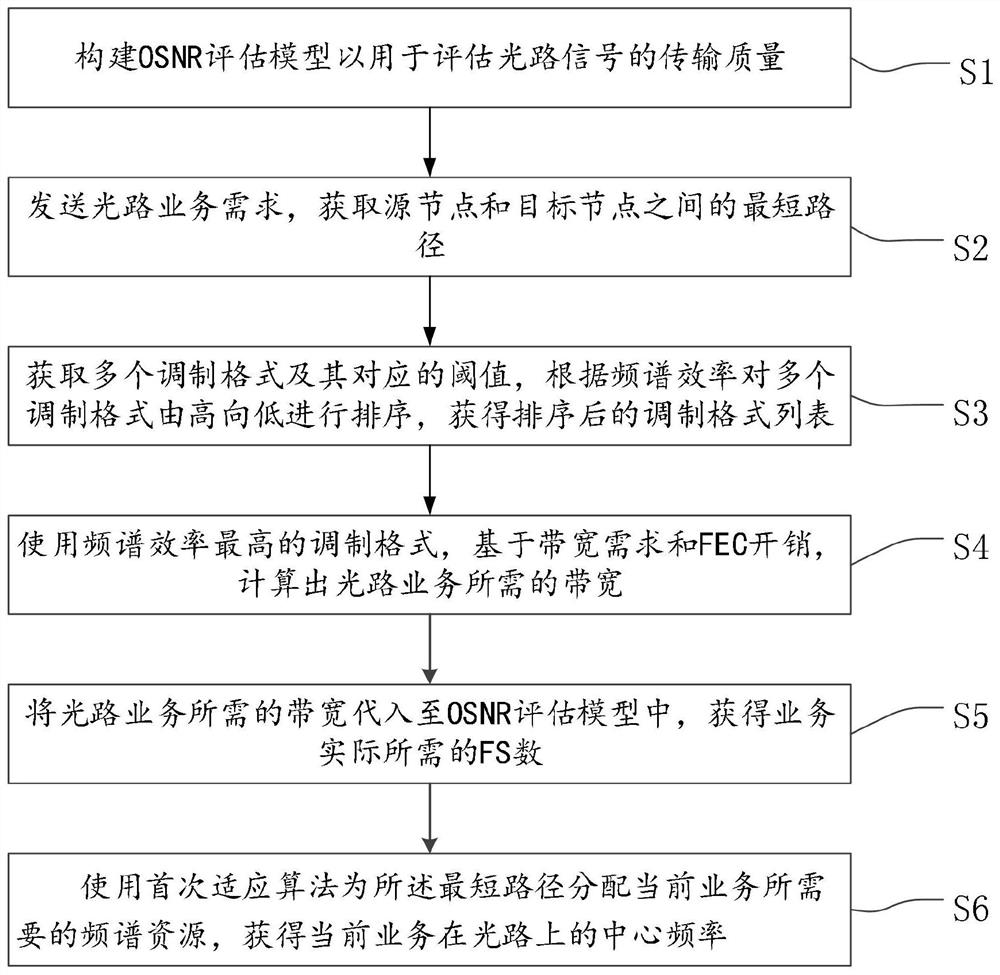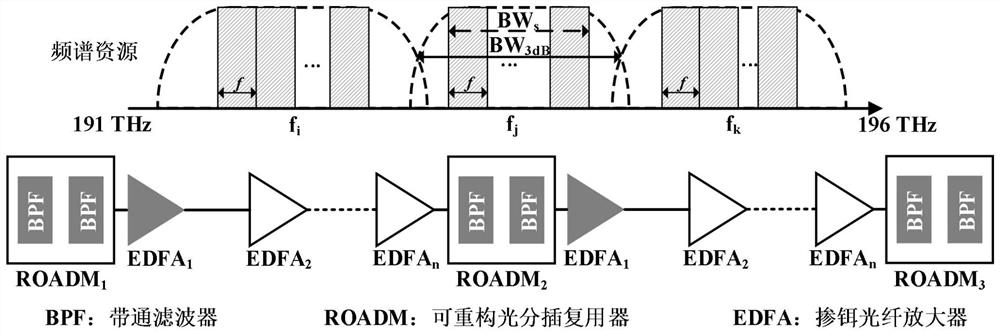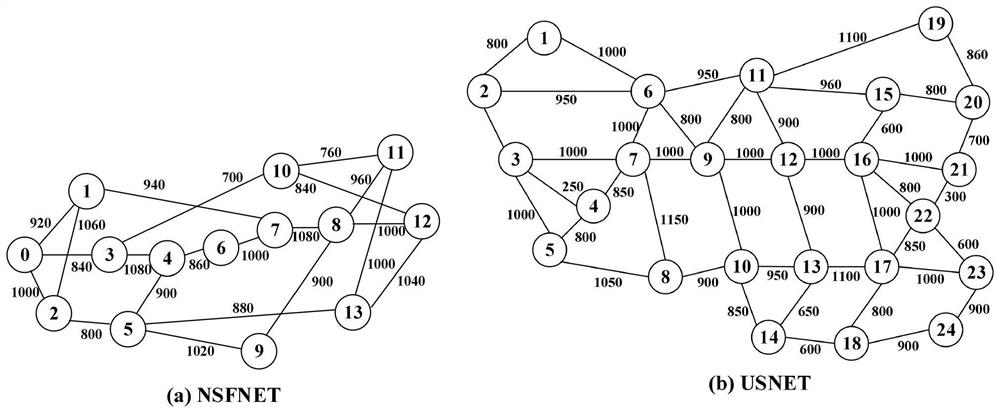OSNR (Optical Signal to Noise Ratio) sensing spectrum allocation method and system under optical channel performance guarantee
A technology for sensing spectrum and allocation method, applied in the field of OSNR sensing spectrum allocation, it can solve the problems such as the inability to accurately reflect the benefits, the optical signal-to-noise ratio evaluation model is no longer accurate, etc. Effect
- Summary
- Abstract
- Description
- Claims
- Application Information
AI Technical Summary
Problems solved by technology
Method used
Image
Examples
Embodiment Construction
[0062] The present invention will be further described below in conjunction with the accompanying drawings and specific embodiments, so that those skilled in the art can better understand the present invention and implement it, but the examples given are not intended to limit the present invention.
[0063] refer to figure 1 As shown, the present invention discloses an OSNR-aware spectrum allocation method under optical channel performance guarantee, comprising the following steps:
[0064] Step 1. Construct an OSNR evaluation model for evaluating the transmission quality of optical path signals. The OSNR evaluation model includes amplified spontaneous emission noise, nonlinear interference and filter narrowing effect caused by ROADM cascade, specifically including:
[0065] When the signal bandwidth is BW s , the 3dB bandwidth of the filter is:
[0066]
[0067] where T is the insertion loss of the filter in dB and N f is the number of cascaded filters, n is the order o...
PUM
 Login to View More
Login to View More Abstract
Description
Claims
Application Information
 Login to View More
Login to View More - R&D Engineer
- R&D Manager
- IP Professional
- Industry Leading Data Capabilities
- Powerful AI technology
- Patent DNA Extraction
Browse by: Latest US Patents, China's latest patents, Technical Efficacy Thesaurus, Application Domain, Technology Topic, Popular Technical Reports.
© 2024 PatSnap. All rights reserved.Legal|Privacy policy|Modern Slavery Act Transparency Statement|Sitemap|About US| Contact US: help@patsnap.com










